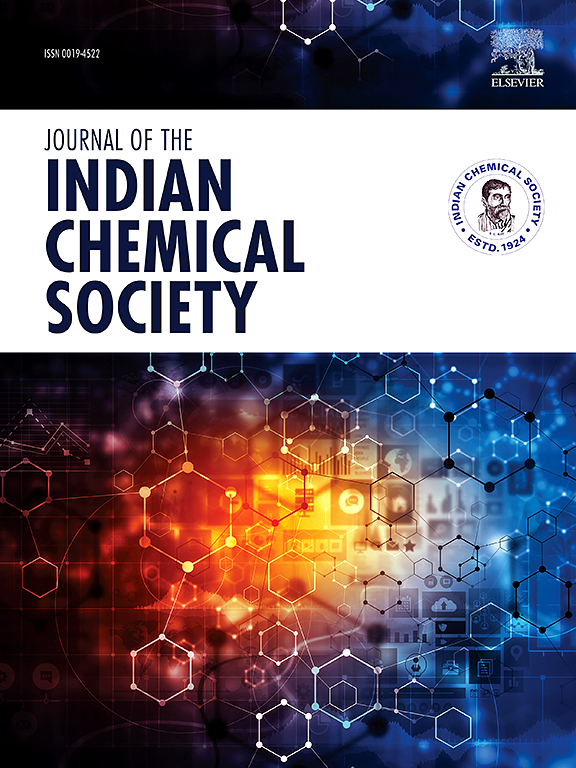Size-tuned silver nanoparticles by a non-gassing electro-osmotic pump-driven microfluidic device
IF 3.2
4区 化学
Q2 CHEMISTRY, MULTIDISCIPLINARY
引用次数: 0
Abstract
Silver nanoparticles (AgNPs) are extensively used in various fields, but conventional synthesis techniques often face limitations in achieving precise control over particle size and morphology. To address this challenge, we explored the use of a microfluidic approach for synthesizing size-tuned AgNPs. Scaling down the reactor dimensions provides better control of the process of AgNPs synthesis and enables a low consumption and a high conversion of the reagents. The study aimed to utilize non-gassing electro-osmotic pumps (EOPs) connected to a three-way Y-junctioned microfluidic device for achieving controlled nanoparticle synthesis. The EOP design features a silica frit sandwiched between two flow-through electrodes composed of an Ag–Fe–O composite material. Performance evaluations revealed that the electro-osmotic flux was linearly dependent on applied voltage, with a maximum flow rate of 175.16 μL min−1 cm−2 achieved at 5.0 V. Optimized device parameters demonstrated effective nanoparticle synthesis, producing uniform AgNPs with sizes ranging from 10 to 15 nm at the maximum flow rate. Furthermore, particle size was found to vary directly with the voltage applied to the individual pumps. The synthesized nanoparticles were extensively characterized, and a long-term stability study confirmed their dispersion remained aggregation-free over 210 days. This research highlights the successful integration of microfluidic technology and EOPs for controlled AgNP synthesis, offering a scalable and precise platform for applications requiring consistent nanoparticle size and stability.

一种非气体电渗透泵驱动的微流控装置的尺寸调谐银纳米颗粒
银纳米颗粒(AgNPs)广泛应用于各个领域,但传统的合成技术在实现对粒径和形貌的精确控制方面往往面临局限性。为了解决这一挑战,我们探索了使用微流体方法来合成尺寸调谐的AgNPs。缩小反应器尺寸可以更好地控制AgNPs合成过程,并实现试剂的低消耗和高转化率。该研究旨在利用非气体电渗透泵(EOPs)连接到一个三向y型连接的微流控装置来实现可控的纳米颗粒合成。EOP的设计特点是将硅块夹在两个由Ag-Fe-O复合材料组成的流过电极之间。性能评价表明,电渗透通量与外加电压呈线性关系,在5.0 V时最大流量为175.16 μL min−1 cm−2。优化后的设备参数显示出有效的纳米颗粒合成,在最大流速下可以生成尺寸在10到15 nm之间的均匀AgNPs。此外,发现颗粒大小与施加到单个泵的电压直接变化。合成的纳米颗粒被广泛表征,长期稳定性研究证实,它们在210天内保持无聚集的分散状态。这项研究强调了微流体技术和EOPs在可控AgNP合成中的成功集成,为需要一致纳米颗粒尺寸和稳定性的应用提供了一个可扩展和精确的平台。
本文章由计算机程序翻译,如有差异,请以英文原文为准。
求助全文
约1分钟内获得全文
求助全文
来源期刊
CiteScore
3.50
自引率
7.70%
发文量
492
审稿时长
3-8 weeks
期刊介绍:
The Journal of the Indian Chemical Society publishes original, fundamental, theorical, experimental research work of highest quality in all areas of chemistry, biochemistry, medicinal chemistry, electrochemistry, agrochemistry, chemical engineering and technology, food chemistry, environmental chemistry, etc.

 求助内容:
求助内容: 应助结果提醒方式:
应助结果提醒方式:


